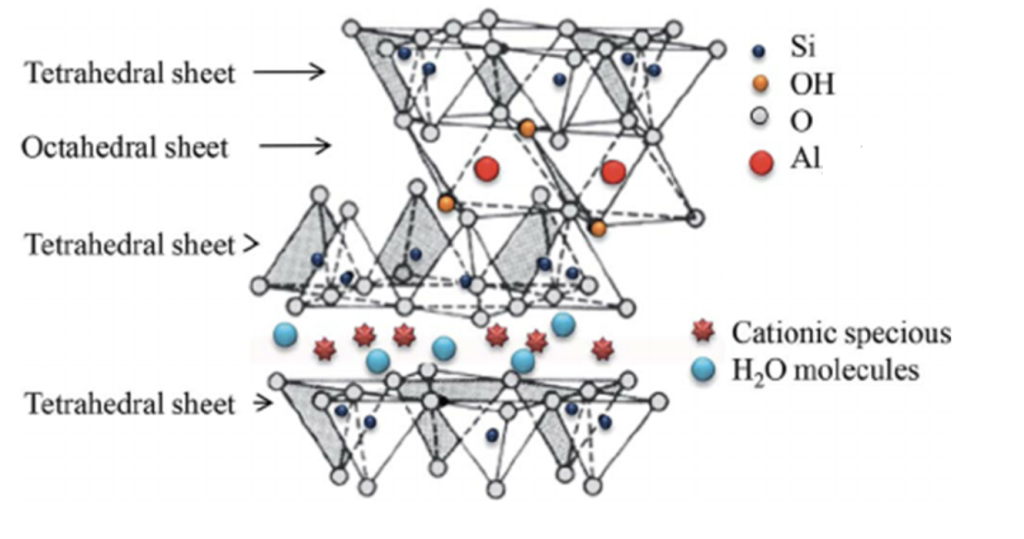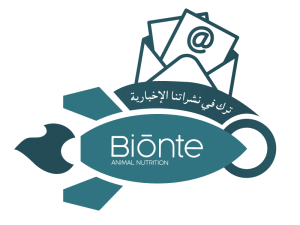In response to the growing concern about mycotoxin contamination in animal feeds, various globally recognized food safety organizations have implemented regulations defining the maximum levels allowed in feeds and animal-origin foods. Mycotoxins, produced by different fungal families, pose a potential threat to both animal health and the safety of derived food products. In an effort to mitigate these risks, the European Food Safety Authority (EFSA) has established a regulatory framework for the use of additives in the mitigation of mycotoxins in animal nutrition. One of the main strategies acknowledged by EFSA involves reducing the bioavailability of mycotoxins in the gastrointestinal tract through the application of adsorbent materials in animal feed formulations. These adsorbent materials can be classified as inorganic compounds, usually of mineral origin, organic substances, or synthetic polymers (EFSA, 2009; Greco et al., 2022).
Mineral adsorbents for mycotoxins
Inorganic adsorbents cover a wide range of materials, among which the mineral family of aluminosilicates stands out for its mycotoxin-binding capacity. Aluminosilicates share the main characteristic of forming tetrahedral units of silicon and oxygen to constitute different crystalline structures. Within the group, there are two subclasses of crystalline minerals: phyllosilicates, such as smectites, and tectosilicates, including zeolites (Di Gregorio et al., 2014). However, these crystalline materials are generally found in natural clays at different levels of purity, coexisting with other types of minerals (EFSA, 2009). In this context, natural clays and their derivates with mycotoxin-binding properties have attracted increasing attention due to their high efficacy, great chemical stability, and advantages of compatibility with other ingredients, as well as their significant natural abundance, low environmental impact and non-toxicity (Li et al., 2018).
Bentonite clays: origin and variability
Bentonites are natural clays mainly composed of phyllosilicate minerals of the smectite group that originate from the alteration of volcanic ash deposits and rock transformation (Li et al., 2018). The geographic source of bentonites reflects distinct mineralogical and physicochemical properties due to variations in the elemental composition and the crystalline structures (Di Gregorio et al., 2014). It is essential to recognize that not all bentonites are equal; their diverse geological origins contribute to differences in surface area, composition of crystalline phases, and active exchange ions, consequently affecting their action as mycotoxin-binding agents. Exploring this variability is crucial for optimizing the selection of highly effective bentonite clays for the application of specific strategies to combat mycotoxin contamination in animal feed production (Wang et al., 2021).
Montmorillonite and trioctahedral smectites
Within bentonite clays, the content and typology of minerals in the smectite category directly influence the adsorption action of mycotoxins (Greco et al., 2022). Smectites are a group of layered phyllosilicate minerals characterized by their structure based on three molecular layers: two layers of silicon coordinated in tetrahedral form with oxygen and a central layer of aluminum coordinated in octahedral form with oxygen (Wang et al., 2021). Depending on the configuration of the aluminum layer, smectites can form dioctahedral structures such as montmorillonite or trioctahedral structures, including saponite and hectorite. Montmorillonite has a 2:1 layered structure with abundant exchangeable surface cations, usually sodium or calcium, in the interlayer space (Wang et al., 2021). Additionally, montmorillonite is the only additive recognized by European authorities, with code 1m558, for the detoxification of aflatoxins in animal production (Greco et al., 2022). However, increasing research in the application of new bentonite clays for mycotoxin mitigation in animal nutrition has been evaluating trioctahedral smectites as innovative ingredients, demonstrating their potential effectivity in adsorbing multiple mycotoxins (Vila Donat et al., 2019; Vila Donat et al., 2020; Greco et al., 2022). Definitively, the layered structure with a high surface area, along with the surface charge attributed by interlayer cations of different smectites, are key factors in the mycotoxin binding mechanism, which should be assessed through in vitro efficacy trials (EFSA, 2009; Greco et al., 2022).

Figure 1. Basic structure of crystalline smectite layers.
The mycotoxin adsorption process
In the adsorption process within the gastrointestinal tract, mycotoxins in the aqueous phase are bound on the surface of adsorbent materials, preventing the absorption of toxins in the intestine and thus allowing the fecal excretion of the clay-mycotoxin complex. By using this strategy, the exposure of animals to mycotoxins is prevented or reduced (EFSA, 2009; Di Gregorio et al., 2014). Adsorption is a complex mechanism that principally occurs on the surface of crystalline particles; therefore, the efficacy and selectivity of different minerals are conditioned by various physicochemical properties of the materials, such as porosity, pore size, surface charge, and distribution. The characteristics of mycotoxins, including polarity, shape, size, and solubility, also play an important role (EFSA, 2009; Di Gregorio et al., 2014; Greco et al., 2022). Currently, the most accepted method for evaluating the potential mycotoxin-binding capacity of bentonites and other adsorbent materials involves conducting in vitro assays that simulate the digestive conditions of different animal species (pH, temperature, incubation time, etc.) (EFSA, 2009; Vila Donat et al., 2019; Vila Donat et al., 2020; Greco et al., 2022). In this context, natural clays with potential anti-mycotoxins activity can be subjected to various industrial processes in order to modify their properties and enhance their efficacy in animals (Li et al., 2018).
Processes of modification of bentonites
In order to maximize the efficacy of natural bentonite clays as mycotoxins binders, various modification processes are employed to optimize the physicochemical properties of the material for enhanced adsorption of both polar mycotoxins (AFB1, FB1, etc.) and nonpolar-hydrophobic mycotoxins (ZEA, OTA, etc.) (Li et al., 2018). The most common modification processes are organic modification, thermal treatment, and pillaring.
- Organic modification involves the addition of organic molecules, typically from the group of cationic surfactants, into the interlayer space of smectites. These molecules interact with the surface of the crystalline layers through covalent, ionic or hydrogen bonds, dipoles or Van der Waals forces. These alterations result in an improvement in the adsorption efficacy of low-polarity mycotoxins (Li et al., 2018).
- Thermal treatment alters the surface chemistry of bentonites. Controlled high temperatures lead to the desorption of interlayer water molecules, thus enhancing the affinity for organic molecules such as mycotoxins along with an increase in active surface area (Li et al., 2018).
- Pillaring is a technique that involves the introduction of metallic cations into the spaces between smectite layers, forming columns of metal oxides after thermal treatment. This process improves the interlayer spaces by increasing porosity and, consequently, effective surface area, promoting greater mycotoxins adsorption capacity (Li et al., 2018).
The synergy between these modification strategies amplifies the performance of bentonite-based adsorbents, turning them into high-tech tools for mitigating mycotoxin contamination in animal feeds. However, it is crucial to consider that the best results in efficacy optimization through modification treatments are achieved with clays that already demonstrate good adsorption properties for mycotoxins in their natural state (Li et al., 2018).
In conclusion Bentonite clays, with mineral composition rich in smectites and subject to properties modification through industrial treatments, stand out as a reliable choice for mitigating mycotoxins in animal nutrition. The increasing scientific research on new adsorbent materials such as trioctahedral clays, coupled with the innovation in optimization processes for enhanced binding efficacy, positions bentonites as a key material in the development of new high-tech agents for the production of safe and high-quality feeds, hence, ensuring food safety and animal welfare.



